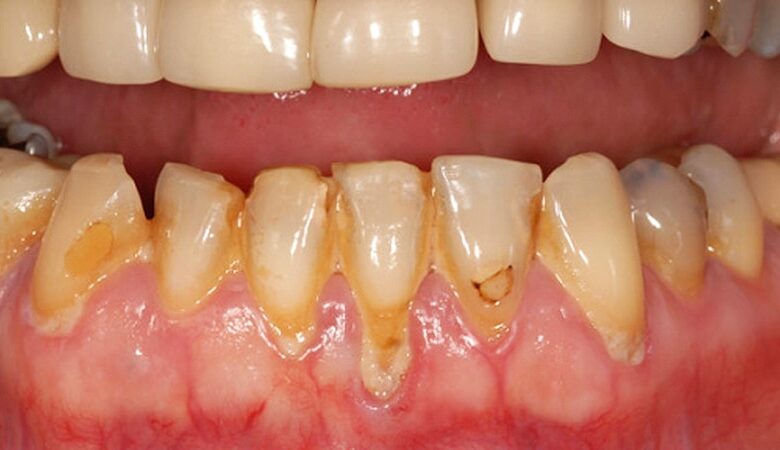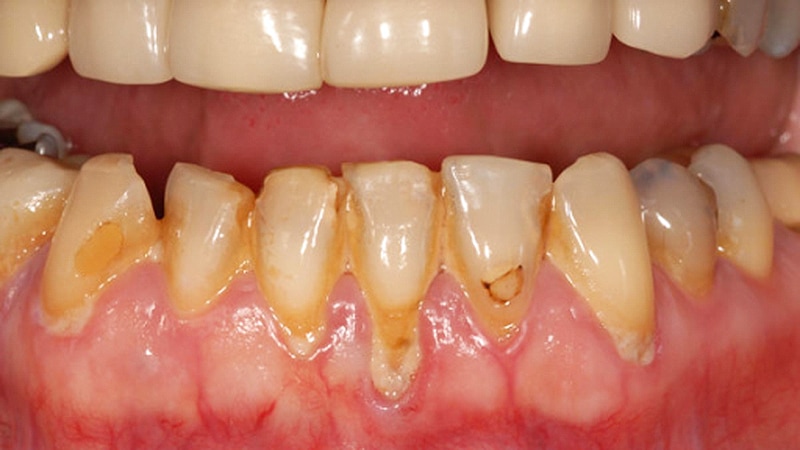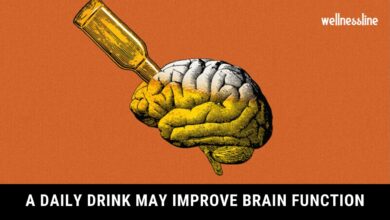
Are alzheimers and gum disease connected – Are Alzheimer’s and gum disease connected? This exploration delves into the potential link between these two seemingly disparate conditions. We’ll examine shared risk factors, investigate possible biological mechanisms, and explore how inflammation, bacteria, and vascular health might play a role in connecting them. Understanding this potential connection could pave the way for new preventative strategies and treatments.
The discussion will explore the potential links between inflammation, bacteria, vascular health, and lifestyle factors in both Alzheimer’s and gum disease. We will look at the potential role of shared risk factors and biological mechanisms. The tables will help summarize the key aspects of the potential connection.
Introduction to the Connection
The human body is a complex network of interconnected systems, and sometimes, seemingly disparate conditions can share underlying biological links. Alzheimer’s disease, a progressive neurodegenerative disorder, and gum disease, a chronic inflammatory condition of the gums, are two such conditions that have shown intriguing correlations. Understanding these potential connections is crucial for developing preventative strategies and potential new treatment avenues.The potential link between Alzheimer’s disease and gum disease isn’t simply a coincidence.
Both conditions involve inflammation, immune responses, and the accumulation of potentially harmful substances in the body. Research is ongoing, but growing evidence suggests a possible interplay between the two, hinting at a common pathway or a series of interconnected processes.
Shared Risk Factors
Numerous risk factors are common to both Alzheimer’s and gum disease. These shared factors contribute to an increased likelihood of developing either condition or both. A common thread in these factors is the chronic inflammatory response in the body.
- Age: Both conditions are more prevalent in older adults. The aging process itself is associated with a weakening of immune responses and an increased vulnerability to various inflammatory processes. This aging process likely plays a crucial role in the development of both conditions.
- Diabetes: Diabetes is a significant risk factor for both Alzheimer’s and gum disease. The chronic high blood sugar levels associated with diabetes can damage blood vessels, impair immune function, and contribute to chronic inflammation, a major player in both conditions.
- Poor Diet and Lifestyle: A diet lacking essential nutrients and a sedentary lifestyle can affect overall health, increasing the risk of both Alzheimer’s and gum disease. These factors can lead to chronic inflammation and oxidative stress, damaging various bodily systems.
- Genetics: While not the sole determinant, genetics play a role in the susceptibility to both Alzheimer’s and gum disease. Some individuals may inherit predispositions to inflammation and immune responses that increase their risk.
Potential Biological Mechanisms
While the precise biological mechanisms linking Alzheimer’s and gum disease are still under investigation, several potential pathways have emerged.
- Inflammation: Both conditions are characterized by chronic inflammation. This persistent inflammation could potentially contribute to the progression of both conditions by damaging cells and tissues. Researchers are exploring the role of inflammatory markers and cytokines in the progression of both Alzheimer’s and gum disease.
- Infectious Agents: Some studies suggest a potential role for infectious agents in the development of Alzheimer’s. Gum disease is a bacterial infection, and the bacteria involved may have a direct or indirect impact on the brain. Further research is necessary to determine the nature of these potential connections.
- Immune System Dysfunction: The immune system plays a critical role in maintaining overall health. Dysfunction in the immune system may contribute to the development of both Alzheimer’s and gum disease. Researchers are exploring the potential interactions between the immune response in the mouth and the central nervous system.
- Vascular Factors: Both conditions are associated with vascular dysfunction. Impaired blood flow and reduced oxygen delivery to the brain and other tissues could play a significant role in the progression of both conditions. This includes the impact of inflammatory substances on the integrity of blood vessels.
Summary Table
| Feature | Alzheimer’s Disease | Gum Disease | Potential Connection |
|---|---|---|---|
| Description | Progressive neurodegenerative disorder affecting memory and cognitive function. | Chronic inflammatory condition affecting the gums and supporting structures of teeth. | Potential interplay between chronic inflammation, infectious agents, and immune dysfunction. |
| Symptoms | Memory loss, confusion, difficulty with language and problem-solving. | Swollen, bleeding gums, bad breath, tooth loss. | Possible overlap in symptoms or risk factors. |
| Risk Factors | Age, genetics, diabetes, poor diet, lifestyle factors. | Age, genetics, diabetes, poor oral hygiene, smoking. | Shared factors like age, diabetes, and inflammation. |
| Potential Mechanisms | Neuroinflammation, amyloid plaques, tau tangles. | Bacterial infection, inflammatory response. | Chronic inflammation as a potential common pathway. |
Inflammation and the Immune System
Inflammation is a crucial part of the body’s defense mechanism, playing a role in healing and fighting off infections. However, chronic, low-grade inflammation can contribute to the development and progression of various diseases, including Alzheimer’s disease and gum disease. Understanding the role of inflammation in these conditions is key to appreciating the potential connection between them.Chronic inflammation, a persistent state of low-level inflammation, is thought to contribute to the damage and dysfunction seen in both Alzheimer’s and gum disease.
This persistent inflammatory response can lead to the accumulation of harmful substances and the disruption of normal cellular processes. In the case of Alzheimer’s, this chronic inflammation may contribute to the formation of amyloid plaques and neurofibrillary tangles, hallmarks of the disease. Similarly, in gum disease, chronic inflammation can lead to the destruction of supporting tissues, ultimately leading to tooth loss.
The Role of Inflammatory Markers
Several molecules, known as inflammatory markers, are elevated during both Alzheimer’s and gum disease. These markers reflect the presence and intensity of the inflammatory response. Examples of these markers include C-reactive protein (CRP), interleukin-6 (IL-6), and tumor necrosis factor-alpha (TNF-α). Elevated levels of these markers can be detected through blood tests and are used as indicators of inflammation and potential disease progression.
Immune System Involvement
The immune system, a complex network of cells and proteins, plays a crucial role in responding to both Alzheimer’s and gum disease. In Alzheimer’s, the immune system may contribute to the damage of brain cells through inflammatory responses. Microglia, immune cells within the brain, are activated in response to amyloid plaques and neurofibrillary tangles, which can contribute to neuronal damage.
Similarly, in gum disease, the immune response to bacterial infections in the mouth leads to the inflammatory response. The immune system’s persistent activation in both conditions may play a significant role in the progression of the diseases.
Comparison of Inflammatory Responses
| Condition | Location of Inflammation | Inflammatory Markers | Immune System Response |
|---|---|---|---|
| Alzheimer’s | Brain tissue, specifically around amyloid plaques and neurofibrillary tangles | Elevated levels of CRP, IL-6, TNF-α, and other inflammatory cytokines | Activation of microglia, leading to the release of inflammatory mediators and potential damage to neurons |
| Gum Disease | Gums and surrounding tissues | Elevated levels of CRP, IL-6, TNF-α, and other inflammatory cytokines | Immune response to bacterial infections, leading to the recruitment of immune cells and the release of inflammatory mediators, damaging the supporting tissues |
Bacterial Factors and the Brain

The connection between gum disease and Alzheimer’s disease extends beyond inflammation and the immune system. A significant factor involves the potential for bacteria from the mouth to reach the brain and potentially contribute to the development or progression of Alzheimer’s. This intricate pathway involves a complex interplay of factors, including bacterial products and the presence of similar bacterial species in both conditions.
Potential Pathways of Bacteria to the Brain
Bacteria from gum disease, specifically Porphyromonas gingivalis, have been identified in the brains of Alzheimer’s patients. While the exact mechanisms are still under investigation, several potential pathways exist. One possibility involves the transportation of bacteria or their products through the bloodstream, potentially overcoming the blood-brain barrier, a protective layer that normally prevents harmful substances from entering the brain.
Another pathway could involve the direct invasion of the brain through the nerves that connect the mouth to the brain.
Bacterial Products and Brain Function
Bacterial products, such as lipopolysaccharide (LPS), a component of the outer membrane of some bacteria, can significantly impact brain function. LPS has been shown to trigger inflammatory responses in the brain, potentially contributing to neuronal damage and cognitive decline. The presence of these bacterial products may also disrupt the delicate balance of neurotransmitters, further impacting brain function. Studies suggest that these products may play a role in amyloid-beta aggregation, a key hallmark of Alzheimer’s disease.
Bacterial Species in Alzheimer’s and Gum Disease
The presence of similar bacterial species in both Alzheimer’s disease and gum disease is a crucial piece of the puzzle. This shared microbial landscape suggests a potential link between the two conditions. The table below highlights some common bacterial species found in both conditions and their potential impact on the brain.
| Bacteria Type | Alzheimer’s Presence | Gum Disease Presence | Potential Impact on Brain |
|---|---|---|---|
| Porphyromonas gingivalis | Present in some cases | Highly prevalent | Potentially triggers inflammation, disrupts neurotransmitters, and may contribute to amyloid-beta aggregation. |
| Tannerella forsythia | Present in some cases | Present in gum disease | May contribute to inflammation and potentially impact brain function. |
| Aggregatibacter actinomycetemcomitans | Present in some cases | Present in some cases | Potentially contributes to inflammation and impacts brain function. |
| Fusobacterium nucleatum | Present in some cases | Present in some cases | May play a role in inflammation and potentially affect brain function. |
Implications and Future Research
The potential role of bacteria in Alzheimer’s disease warrants further investigation. The intricate interplay between bacterial species, their products, and the brain’s response remains a complex area of study. Future research should focus on the precise mechanisms by which bacteria from gum disease reach the brain and the specific ways in which bacterial products impact brain function and contribute to the development or progression of Alzheimer’s.
While the link between Alzheimer’s and gum disease is still being researched, it’s fascinating to consider how various seemingly disparate factors might play a role. Think about how universal “baby talk” is across cultures; it suggests that our brains are hardwired to recognize and respond to certain vocal patterns. Similarly, understanding the connection between oral health and cognitive decline could potentially unlock further insights into the complexities of the human brain, just as baby talk is universal highlights the innate communicative nature of humans.
This exploration of interconnectedness could offer a fresh perspective on preventing Alzheimer’s, focusing on proactive oral hygiene.
Understanding these connections could lead to new diagnostic and therapeutic strategies for both gum disease and Alzheimer’s.
Vascular System Involvement

The vascular system, our network of blood vessels, plays a critical role in delivering oxygen and nutrients to all parts of the body, including the brain. Any disruption in this system can have severe consequences, and this is a key area where Alzheimer’s disease and gum disease might intersect. Compromised blood flow can lead to a cascade of negative effects on both brain health and the overall body’s ability to function optimally.Vascular changes are a significant aspect of both Alzheimer’s and gum disease, and these changes often interact, potentially exacerbating the impact on the body and brain.
While the connection between Alzheimer’s and gum disease is still being researched, some studies suggest a link. Staying active is important for overall health, and a great way to do that is by checking out some triathlon top iPhone and Android apps to help you track your progress triathlon top iphone android apps. This could help you stay motivated and on track, which might indirectly impact the potential link between gum disease and cognitive decline.
Ultimately, more research is needed to solidify the exact nature of any relationship between the two.
Chronic inflammation and the presence of bacterial products can damage blood vessels, contributing to impaired blood flow. This, in turn, affects the brain’s ability to receive vital nutrients and oxygen, which can lead to further deterioration and cognitive decline.
Vascular Damage Mechanisms
Inflammation, a crucial part of the body’s response to injury or infection, can become chronic in both Alzheimer’s and gum disease. This chronic inflammation contributes to vascular damage by releasing harmful substances that weaken and thicken the blood vessel walls. Furthermore, bacterial products released by periodontal bacteria in gum disease can directly harm endothelial cells, the cells that line blood vessels, leading to inflammation and further vascular damage.
This damage can manifest as atherosclerosis, the buildup of plaque in the arteries, which further restricts blood flow.
Impaired Blood Flow Effects on Brain Health
Reduced blood flow to the brain deprives brain cells of essential oxygen and nutrients, leading to cellular dysfunction and damage. This lack of oxygen can cause neuronal death, a crucial process in the progression of Alzheimer’s disease. Moreover, impaired blood flow can impact the clearance of metabolic waste products from the brain, further contributing to the buildup of toxins that can damage brain tissue.
The connection between Alzheimer’s and gum disease is a fascinating area of research. While the exact mechanisms aren’t fully understood, it’s becoming increasingly clear that a link exists. This raises questions about the broader picture of unnecessary medical interventions, like the hundreds of medical procedures deemed unnecessary that are performed each year. Ultimately, understanding this connection between oral health and cognitive function is crucial for preventative care strategies.
Vascular Connections and Effects
| Vascular Effect | Alzheimer’s Impact | Gum Disease Impact | Potential Combined Effect |
|---|---|---|---|
| Inflammation-induced blood vessel damage | Increased risk of cerebral amyloid angiopathy (CAA), where amyloid plaques build up in the blood vessels of the brain, further impairing blood flow. | Increased risk of atherosclerosis in arteries throughout the body, including those supplying the brain. | A synergistic effect, potentially accelerating both Alzheimer’s and gum disease progression by exacerbating inflammation and reducing blood flow even more. |
| Bacterial products damaging endothelial cells | Increased susceptibility to amyloid plaque deposition and tau tangles formation, contributing to neuronal damage and cognitive decline. | Periodontal pathogens releasing toxins and inflammatory molecules. | Potentially leading to a vicious cycle where inflammation, bacterial products, and impaired blood flow reinforce each other, contributing to the progression of both diseases. |
| Atherosclerosis | Impaired cerebral blood flow, contributing to neuronal loss and cognitive decline. | Reduced blood flow to peripheral tissues and organs. | Further impairment of cerebral blood flow, increasing the risk of stroke and cognitive impairment, and impacting overall health. |
| Reduced clearance of metabolic waste products | Accumulation of amyloid plaques and tau tangles in the brain, further contributing to neuronal damage and cognitive decline. | Chronic inflammation impacting the body’s ability to clear waste products. | Potentially accelerating the accumulation of toxins in the brain, accelerating the progression of both Alzheimer’s and gum disease. |
Lifestyle and Environmental Factors: Are Alzheimers And Gum Disease Connected
Beyond genetics and bacteria, lifestyle choices significantly impact the risk of both Alzheimer’s disease and gum disease. Understanding these influences is crucial for developing preventative strategies. Factors like diet, exercise, stress levels, and even exposure to environmental toxins can play a role in the development and progression of both conditions.
Dietary Habits
A diet rich in processed foods, sugar, and saturated fats can increase the risk of both Alzheimer’s and gum disease. These dietary choices contribute to inflammation throughout the body, a known risk factor for both conditions. Conversely, a diet rich in fruits, vegetables, and omega-3 fatty acids can potentially lower the risk of these diseases. Anti-inflammatory foods and antioxidants may be beneficial in reducing the burden of inflammation.
Physical Activity
Regular physical activity has been shown to reduce the risk of Alzheimer’s disease. It improves cardiovascular health, reduces inflammation, and promotes overall brain health. Similarly, maintaining good oral hygiene, including regular brushing and flossing, is essential for preventing gum disease. These activities contribute to the overall health of the body and mouth, lowering risks associated with both conditions.
Stress Management
Chronic stress can negatively impact both the brain and the immune system, potentially increasing the risk of both Alzheimer’s and gum disease. Stress hormones can lead to inflammation, impacting various bodily functions. Effective stress management techniques, such as mindfulness, meditation, and yoga, may help mitigate these effects. Practicing relaxation techniques can be crucial in lowering stress levels, thereby decreasing inflammation and supporting overall well-being.
Environmental Factors
Exposure to environmental toxins, such as air pollution and certain chemicals, may also increase the risk of both Alzheimer’s and gum disease. These toxins can contribute to inflammation and oxidative stress, negatively impacting brain health and oral tissues. Limiting exposure to these harmful substances through conscious choices about where to live and work can be a significant preventative measure.
Table: Lifestyle Factors and Disease Risk, Are alzheimers and gum disease connected
| Lifestyle Factor | Alzheimer’s Risk | Gum Disease Risk | Potential Combined Effect |
|---|---|---|---|
| Unhealthy Diet (high in processed foods, sugar, saturated fats) | Increased | Increased | Increased inflammation throughout the body, potentially exacerbating both conditions. |
| Lack of Physical Activity | Increased | Increased | Reduced cardiovascular health, increased inflammation, and weakened immune response, potentially making the individual more susceptible to both diseases. |
| Chronic Stress | Increased | Increased | Elevated levels of stress hormones can contribute to inflammation, weakening the immune system, and increasing the risk of both diseases. |
| Exposure to Environmental Toxins | Increased | Increased | Toxins can contribute to inflammation and oxidative stress, damaging both brain cells and oral tissues. |
| Regular Physical Activity | Decreased | Decreased | Improved cardiovascular health, reduced inflammation, and enhanced immune response, potentially reducing the risk of both diseases. |
| Healthy Diet (rich in fruits, vegetables, omega-3s) | Decreased | Decreased | Anti-inflammatory and antioxidant properties can help reduce the burden of inflammation in the body. |
| Stress Management Techniques | Decreased | Decreased | Reduces stress hormones, improves immune response, and promotes overall well-being, potentially reducing risk. |
| Minimizing Exposure to Environmental Toxins | Decreased | Decreased | Reduces inflammation and oxidative stress, promoting better overall health. |
Final Summary
In conclusion, the evidence suggests a possible connection between Alzheimer’s and gum disease, primarily through the shared pathways of inflammation, bacterial factors, and vascular health. Further research is crucial to confirm these potential links and to develop effective preventive strategies. Lifestyle choices appear to play a significant role, highlighting the importance of maintaining good oral hygiene and overall health.
By better understanding these connections, we can work towards a future with improved preventative measures and treatments for both conditions.





